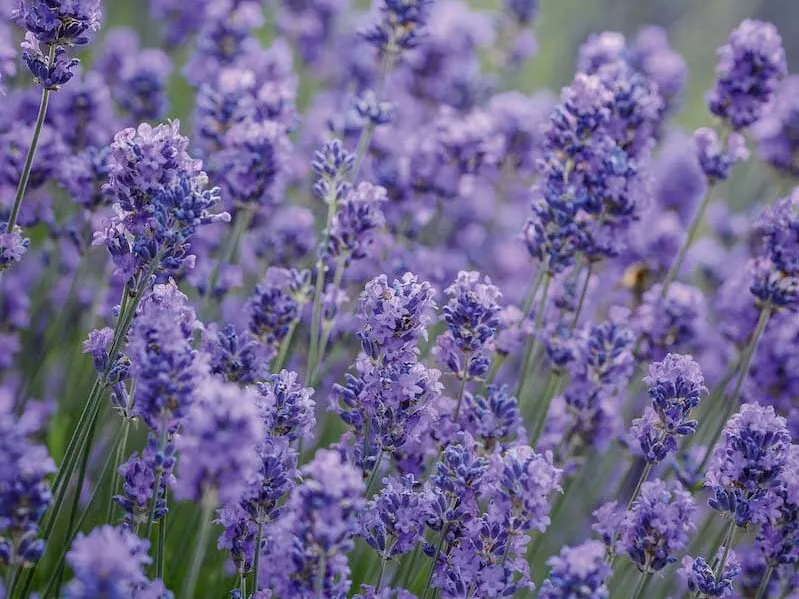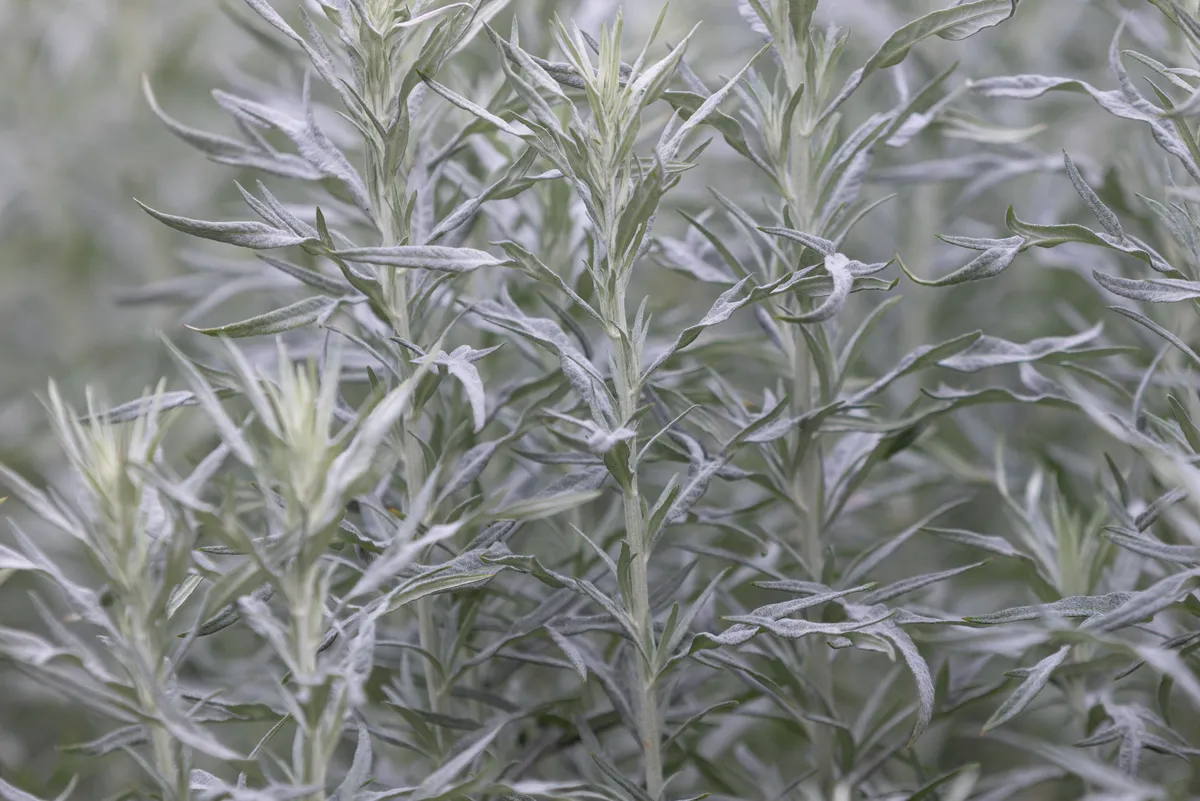What is companion planting?
Companion planting is growing a specific mix of flowers and vegetables among one another using plants that attract predators and pollinators and deter pests, often by overpowering the natural aroma of their favoured host and creating shelter for the vegetable crops. The idea is that these also grow at a similar speed so nothing dominates. Most companion planting takes place in the vegetable plot and the companions often have culinary uses of their own.
Mixing flowers and vegetables together not only helps with practical pest control and plant growth but allows the creation of a kitchen garden in the style of a French potager or English cottage garden so your plantings are both edible and ornamental.
Jump to
- Companion plants that attract pollinators
- Companion plants for attracting predators
- Companion plants to sacrifice to bugs
- Companion plants to create shelter
- Companion plants that hide smells
- Bad companion plants
- Good companion plants
Does companion planting really work?
Myth busting
Most evidence for companion planting benefits is anecdotal, and the results are variable, one common combination is planting basil to deterring whitefly from tomatoes in the greenhouse. Companion planting that is scientifically proven includes planting French marigolds (Tagetes) with tomatoes to deter whitefly and discourage soil nematodes. (This is only effective when the marigolds are in flower so deadhead to encourage continuous flowering.)

Often companion planting will work, but only if you get the layout right. Mixing cabbages and dwarf French beans together confuses cabbage root fly, for example, but the outer row must be beans. Planting one row of carrots to four of onions to confuse carrot fly is only effective when the onions are growing. Leeks are also an effective substitute.
Companion plants for attracting pollinators
Massed flowering plants also attract pollinators for flowering crops like peas and beans and fruit including raspberries. Try hardy annuals like cornflowers (Centaurea cyanus), annual scabious, 'Poached Egg Plant' Limnanthes douglasii and larkspur sown in spring all attract pollinators to crops.
A traditional method is growing sweet peas among runner beans or planting lavender nearby to attract bees and hoverflies - its strong fragrance also reduces pests on carrots and leeks. Calendula or pot marigold, whose petals can be used to decorate salads, also attract beneficial insects and have the added advantage of tempting aphids away from broad beans. They are also an excellent companion for French and runner beans.
Here's more great plants for attracting pollinators

Companion plants for attracting predators
Larvae and adult ladybirds and lacewings and hoverflies (whose larvae eat up to 800 aphids before pupating) control aphids and caterpillars. They are particularly attracted to umbellifers, like dill, coriander and fennel (Foeniculum vulgare) plus the poached egg plant (Limnanthes douglasii), dwarf morning glory (Convolvulus tricolor) and pot marigolds (Calendula officinalis). The pungent aroma of wormwood (Artemisia absinthium) deters aphids from beans. Shade creating vegetables like carrot foliage also provide shelter for ground beetles.
Companion plants to sacrifice to bugs
Grow nasturtiums to attract black bean aphids away from broad beans and cabbage white butterflies from brassicas. Flowers and unaffected leaves can be used in salads. Chinese cabbage attracts whitefly from other brassicas. Sow extra rows of spinach or lettuce to attract slugs away from other crops. Basil also attracts whitefly.
Companion plants for shelter
Not all companion plants need to be adjacent to each other. Windbreaks and hedges moderate the microclimate reducing wind speed and water loss from plants but should not be planted so close to the vegetable plot that they compete with crops for water and nutrients. Plant lettuces around outdoor cucumbers, strawberries, and radishes, which all enjoy a humid environment. Climbing runner or French beans provide shade and keep the soil cool so lettuce can germinate in the heat of summer. Germination is erratic at soil temperatures above 25C (77F) but the general rule, avoid planting tall plants next to shorter plants as excessive shade slows growth.

Makes good displays of strong lavender-blue flowers atop typical, aromatic grey foliage. Needs a sunny, free-draining position. 60cm. RHS H5, USDA 5a-8b.
Companion plant odour eaters
Many pests are attracted by the scent of the host plant, so masking this with a stronger fragrance of volatile oils can be very effective. Try pots of mint (which stops it from spreading) or sage (whose flowers also attract pollinators) among brassicas, including turnips and radish; the scent from the leaves deters flea beetle. Grow carrot with onions, leeks or lavender; artemisia and tagetes with beans and borage (whose flowers can be used in summer drinks) with strawberries, as it is said to improve their flavour. Calendula is excellent for attracting pollinators to courgettes. Planting tagetes with potatoes deters eelworms. The pungent smell of tansy (Tanacetum vulgare) deters ants, wasps and flies and the flowers attract beneficial insects like bees. Growing rows of onions among brassicas and outdoor tomatoes alongside cabbages deters cabbage white butterflies.

Try growing strips of clover in the spaces between fruit trees or bushes. If mown regularly, the cuttings can be thrown under the bushes, where the nitrogen-rich leaves break down quickly to supply nutrients to the fruit trees. Strawberries also grow well under the dappled shade of fruit trees.
Bad companion plants
Some plants produce chemicals in their roots and leaves to prevent others from growing nearby (alleopathy). An oft quoted example is plants growing under walnut trees due to the exudate from their roots, though this is often disputed. However, garlic, chives, fennel and onions don’t grow well with beans; onions or mint with asparagus, which prefers a dedicated bed. Growing potatoes with radish, squashes and tomatoes and brassicas near strawberries, tomatoes or potatoes is also best avoided. Do not plant dill and carrots together, as the carrots become woody and stronger flavoured and the dill, mild with weak stems.
Good companion plant pairings
Marigolds with tomatoes
To deter whitefly and discourage soil nematodes.

Shallow rooted onions and carrots or parsnips
Produce roots at different depths in the soil, so they do not compete with one another for nutrients.
Cabbages and dwarf beans
Confuses cabbage root fly, though the outer row must be beans.

Carrot with onions, leeks or lavender
The smells will be masked by the lavender

Makes good displays of strong lavender-blue flowers atop typical, aromatic grey foliage. Needs a sunny, free-draining position. 60cm. RHS H5, USDA 5a-8b.
Artemisia and tagetes with beans and borage with strawberries
Great for smell masking

Shallow rooted onions and carrots or parsnips
These produce roots at different depths in the soil, so do not compete with one another for nutrients.

Carrots and onions/leeks
Planting one row of carrots to four of onions to confuse carrot fly, this is only effective when the onions are growing. Leeks are a good substitute.
Sweet peas or lavender among runner beans
Bees and hoverflies will be attracted and its strong fragrance also reduces pests on carrots and leeks.

Calendula or ‘Pot Marigold’ and French, runner and broad beans
Attracts beneficial insects, tempts aphids away.

Umbellifers, like dill, coriander and fennel (Foeniculum vulgare) plus the poached egg plant (Limnanthes douglasii), dwarf morning glory (Convolvulus tricolor) and pot marigolds (Calendula officinalis)
All great for attracting larvae and adult ladybirds and lacewings and hoverflies which eat aphids.

Carrot foliage
Great for providing shelter for ground beetles.
Planting tagetes with potatoes
This deters eelworms.
Tansy (Tanacetum vulgare)
The pungent smell deters ants, wasps and flies and the flowers attract beneficial insects like bees.

Lettuces around outdoor cucumbers, strawberries, and radishes
These all enjoy a humid environment

Growing rows of onions among brassicas and outdoor tomatoes alongside cabbages
This will deter cabbage white butterflies.
Climbing runner or French beans with lettuce
This provides shade and keeps the soil cool so lettuce can germinate in the heat of summer.

Mint or sage (whose flowers also attract pollinators) among brassicas.
Masks the smell.

Nasturtiums
To attract black bean aphids away from broad beans and cabbage white butterflies from brassicas.

Chinese cabbage
Attracts whitefly from other brassicas.
